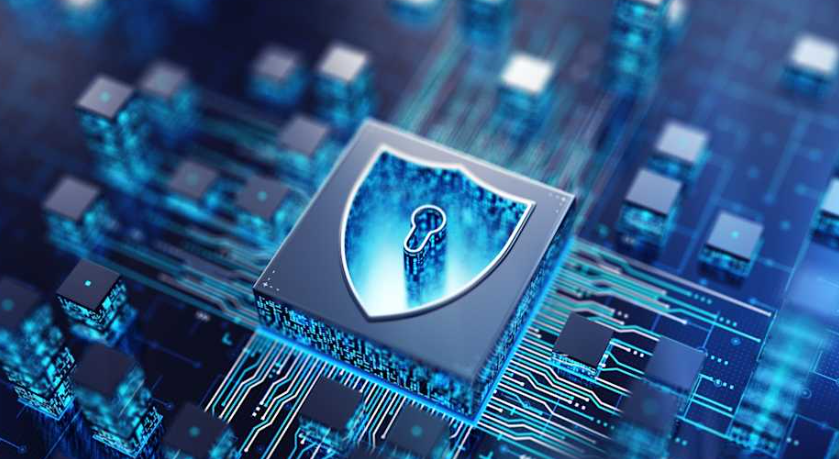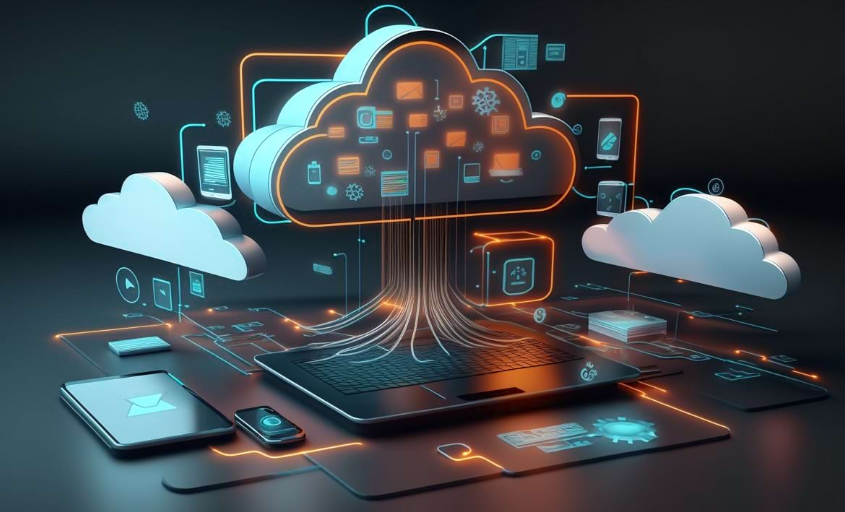Cybersecurity is a constantly evolving field, and staying ahead of emerging threats is crucial for individuals, businesses, and governments alike. As we look toward the future, cybersecurity trends for 2025 are beginning to take shape. With advancements in technology, evolving cyber threats, and the increased reliance on digital platforms, the need for robust cybersecurity strategies has never been more vital.
In this article, we will explore the most important cybersecurity trends that will define 2025 and beyond. From the rise of artificial intelligence (AI) to the growing importance of cloud security, these are the key trends to watch out for as we enter the next phase of the digital age.
1. The Rise of Artificial Intelligence in Cybersecurity
AI and Machine Learning: The New Frontiers
In 2025, artificial intelligence (AI) will play an even more significant role in cybersecurity. Cybercriminals are already using AI to launch sophisticated attacks, and it’s only a matter of time before AI becomes a critical tool for defense. AI systems will help security teams identify and mitigate threats faster and more effectively than traditional methods.
AI and machine learning (ML) will be crucial in detecting anomalies, predicting attacks, and automating responses. By analyzing vast amounts of data in real-time, AI can identify patterns that humans might miss, allowing for faster detection and prevention of potential breaches. The automation of security tasks will also free up human analysts to focus on more complex threats.
See also: backstageviral
AI-Powered Threat Hunting
Threat hunting, the practice of proactively seeking out threats in a network, will become more advanced with AI. With machine learning algorithms, cybersecurity teams will be able to scan network traffic, identify suspicious activities, and isolate potential risks automatically. This shift will reduce response times and make security operations more efficient.
2. The Proliferation of Internet of Things (IoT) Security Challenges
A Growing Attack Surface
As the Internet of Things (IoT) continues to expand, cybersecurity professionals will face increasing challenges in securing connected devices. By 2025, there will be billions of devices connected to the internet, from smart home devices to industrial machinery. Each of these devices represents a potential entry point for cybercriminals.
With IoT, there is often little regard for security during development, leaving vulnerabilities that attackers can exploit. In 2025, businesses and individuals must take IoT security seriously. Companies will need to implement robust security measures, such as encryption and device authentication, to safeguard these devices from attacks.
Zero Trust for IoT Networks
A zero-trust security model, where all devices are treated as untrusted until proven otherwise, will become critical for IoT environments. This model ensures that even if a device is compromised, the attacker will not have unfettered access to the rest of the network. With the growth of IoT, zero-trust principles will be the standard to follow in securing these devices.
3. Cloud Security: A Growing Priority
The Shift to Cloud-Based Infrastructure
By 2025, more organizations will have fully embraced cloud-based infrastructures. As businesses continue to migrate to the cloud, the demand for cloud security will skyrocket. While cloud services offer flexibility, scalability, and cost-effectiveness, they also introduce unique security challenges, such as shared responsibility models and multi-cloud environments.
To protect sensitive data, companies must implement strong cloud security strategies. This includes encrypting data, setting strict access controls, and continuously monitoring cloud environments for signs of malicious activity. Cloud service providers will also continue to improve their security offerings, but organizations will need to take proactive steps to ensure their data remains secure.
Secure Access Service Edge (SASE)
SASE is a security framework that combines networking and security functions into a single cloud-native platform. By 2025, SASE will become an integral part of enterprise cybersecurity strategies, offering comprehensive protection for users regardless of location. This approach will help secure remote workers, ensure safe access to cloud applications, and mitigate risks associated with cloud-based systems.
4. Quantum Computing: A Double-Edged Sword
The Threat to Encryption
Quantum computing has the potential to revolutionize industries, but it also poses a significant threat to current encryption methods. Quantum computers could break traditional encryption algorithms, leaving sensitive data vulnerable to attacks. By 2025, quantum computing will begin to have a more direct impact on cybersecurity as these technologies advance.
To prepare for this new threat, cybersecurity professionals will need to develop quantum-resistant encryption algorithms. Governments and organizations worldwide are already investing in post-quantum cryptography to ensure that data remains secure in a world with quantum computing.
Quantum-Ready Security Solutions
As quantum computing matures, cybersecurity tools and solutions will need to evolve. Companies will need to adopt quantum-resistant cryptographic techniques to future-proof their data security. By 2025, organizations that remain proactive in preparing for quantum threats will have a competitive advantage in protecting their digital assets.
5. Cybersecurity in a Remote Work World
The Remote Work Surge
The global shift to remote work has brought with it significant cybersecurity challenges. With employees accessing sensitive company data from various locations, networks, and devices, businesses have had to adapt quickly to secure their operations. In 2025, remote work will remain a dominant trend, but companies will need to implement stronger cybersecurity measures to safeguard their distributed workforce.
Endpoint Security and Zero Trust
Endpoint security will be a key area of focus for organizations in 2025. With remote work, employees’ devices—whether laptops, smartphones, or tablets—become prime targets for cybercriminals. Endpoint security solutions will evolve to provide more comprehensive protection, and the adoption of zero-trust security models will ensure that every user and device is authenticated before gaining access to critical systems.
6. The Increasing Importance of Privacy Regulations
Stricter Data Privacy Laws
As data breaches become more frequent, governments around the world are implementing stricter data privacy regulations. By 2025, privacy laws like the General Data Protection Regulation (GDPR) in Europe and the California Consumer Privacy Act (CCPA) in the United States will become the norm across many jurisdictions. Organizations must ensure they are compliant with these laws to avoid significant fines and penalties.
Privacy by Design
In 2025, businesses will adopt a “privacy by design” approach, ensuring that data privacy is integrated into their processes from the ground up. This proactive approach will help organizations manage data privacy risks more effectively and reduce the likelihood of a data breach. With consumer trust on the line, protecting privacy will be a central concern for businesses in the coming years.
7. Ransomware Evolution: New Threats, New Solutions
The Growing Ransomware Threat
Ransomware attacks will continue to be a major cybersecurity threat in 2025. These attacks, where cybercriminals encrypt an organization’s data and demand payment for its release, are becoming more sophisticated. In 2025, ransomware attacks may target cloud infrastructure, IoT devices, and even critical infrastructure sectors like healthcare and energy.
Proactive Defense Against Ransomware
In response to the growing ransomware threat, cybersecurity experts are shifting toward more proactive defense strategies. This includes better threat intelligence, improved network segmentation, and advanced encryption techniques. Businesses will also need to implement regular data backups and test recovery processes to minimize the impact of a potential ransomware attack.
8. The Future of Cybersecurity Careers
An In-Demand Field
As cybersecurity threats continue to grow, so will the demand for skilled cybersecurity professionals. By 2025, the cybersecurity workforce will need to expand significantly to address the increasing complexity and scale of threats. Professionals with expertise in AI, machine learning, cloud security, and quantum computing will be in particularly high demand.
Continued Professional Development
In 2025, cybersecurity professionals will need to stay ahead of emerging trends by continually updating their skills. Cybersecurity training and certifications will remain essential for career advancement, with many organizations offering ongoing development opportunities for their teams.
Conclusion
As we approach 2025, cybersecurity will become an even more critical aspect of our digital lives. The rapid growth of AI, IoT, quantum computing, and cloud infrastructures will present both opportunities and challenges. By staying informed about the latest trends and adapting to new threats, businesses and individuals can better protect themselves in an increasingly interconnected world.
FAQs
- What is the role of AI in cybersecurity by 2025?
- AI will help cybersecurity teams automate threat detection, predict attacks, and analyze vast amounts of data in real-time, making it a crucial tool in defense strategies.
- How will IoT security evolve in 2025?
- As IoT devices proliferate, the focus will be on implementing stronger security measures like encryption, device authentication, and zero-trust security models to protect against breaches.
- What are the biggest threats to cloud security in 2025?
- Cloud security risks include unauthorized access, data breaches, and misconfigurations. Companies must adopt strict access controls, encryption, and continuous monitoring to mitigate these risks.
- Will quantum computing disrupt cybersecurity?
- Quantum computing poses a threat to traditional encryption methods. By 2025, post-quantum cryptography will become essential to protect sensitive data from quantum-enabled attacks.
- How can companies defend against ransomware attacks?
- Companies can defend against ransomware by improving threat intelligence, segmenting networks, adopting advanced encryption, and regularly backing up data to ensure rapid recovery.
- What skills will be in demand for cybersecurity professionals in 2025?
- Professionals with expertise in AI, machine learning, cloud security, and quantum computing will be highly sought after to meet the growing challenges in the cybersecurity field.




